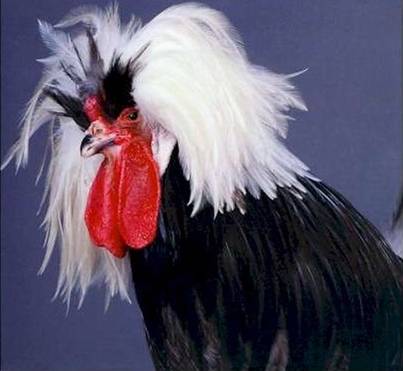|
|
Chickens And Roosters
|
A lack of data from Thailand, Russia, the Indian subcontinent, Southeast Asia and Sub-Saharan Africa makes it difficult to lay out a clear map of the spread of chickens in these areas; better description and genetic analysis of local breeds threatened by extinction may also help with research into this area.
• Current
Under natural conditions, most birds lay only until a clutch is complete, and they will then incubate all the eggs. Many domestic hens will also do this–and are then said to "go broody". The broody hen will stop laying and instead will focus on the incubation of the eggs (a full clutch is usually about 12 eggs). She will "sit" or "set" on the nest, protesting or pecking in defense if disturbed or removed, and she will rarely leave the nest to eat, drink, or dust-bathe. While brooding, the hen maintains the nest at a constant temperature and humidity, as well as turning the eggs regularly during the first part of the incubation. To stimulate broodiness, an owner may place many artificial eggs in the nest, or to stop it they may place the hen in an elevated cage with an open wire floor.
At the end of the incubation period (about 21 days), the eggs, if fertile, will hatch. Development of the egg starts only when incubation begins, so they all hatch within a day or two of each other, despite perhaps being laid over a period of two weeks or so. Before hatching, the hen can hear the chicks peeping inside the eggs, and will gently cluck to stimulate them to break out of their shells. The chick begins by "pipping"; pecking a breathing hole with its egg tooth towards the blunt end of the egg, usually on the upper side. It will then rest for some hours, absorbing the remaining egg yolk and withdrawing the blood supply from the membrane beneath the shell (used earlier for breathing through the shell). It then enlarges the hole, gradually turning round as it goes, and eventually severing the blunt end of the shell completely to make a lid. It crawls out of the remaining shell, and its wet down dries out in the warmth of the nest.
|
|









